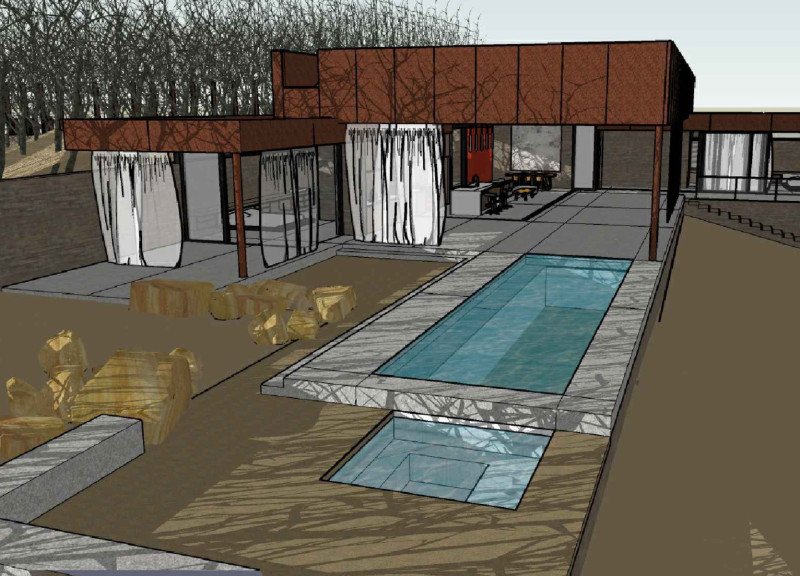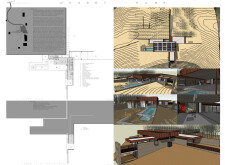5 key facts about this project
## Project Overview
The Desert Home is situated in a desert environment and is designed to merge harmoniously with the surrounding landscape while prioritizing sustainability and minimal environmental impact. The residence integrates with the natural topography and ecological systems, reflecting a design philosophy that respects and responds to the unique challenges of arid climates. Central to the project is the intent to create a dwelling that enhances the living experience while remaining in dialogue with its environment.
## Spatial Organization and Functionality
The organization of spaces within the residence is deliberate and functional. The main living area serves as the heart of the home, incorporating the kitchen, dining, and living spaces to foster a communal atmosphere. Guest accommodations, located to the west of the main living area, provide privacy while maintaining accessibility. The design includes outdoor features, such as a pool and shaded areas, facilitated by large glass sliding doors that promote connectivity between indoor and outdoor spaces.
The floor plan is strategically zoned to optimize natural light and ventilation while catering to various functions. A lower level offers additional living and storage spaces, enhancing the home's versatility for residents and visitors alike.
## Material Considerations
The material palette emphasizes sustainability while ensuring structural integrity and aesthetic appeal. Key materials include reinforced concrete for stability and thermal mass, steel beams for modern structural support, and weather-resistant thermal-treated cedar for external cladding. Expansive glass windows and doors invite natural light and unify the interior with the landscape, while textured stone pathways enhance visual continuity and stability throughout the site.
Incorporation of sustainable features further underscores the project's commitment to environmental responsibility. Passive cooling techniques and automated shading devices promote energy efficiency, while strategically placed solar panels harness renewable energy. The attentive landscaping respects local flora, ensuring the design complements rather than disrupts the existing ecosystem. This cohesive approach establishes a strong visual connection to the surrounding landscape, making the Desert Home a reflection of both its function and context.






















































